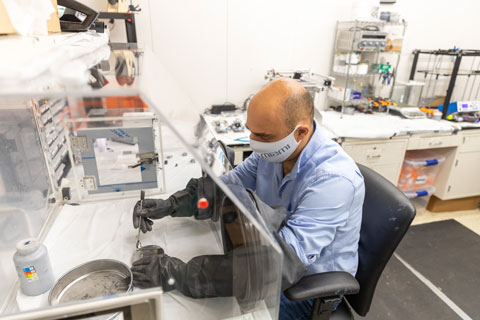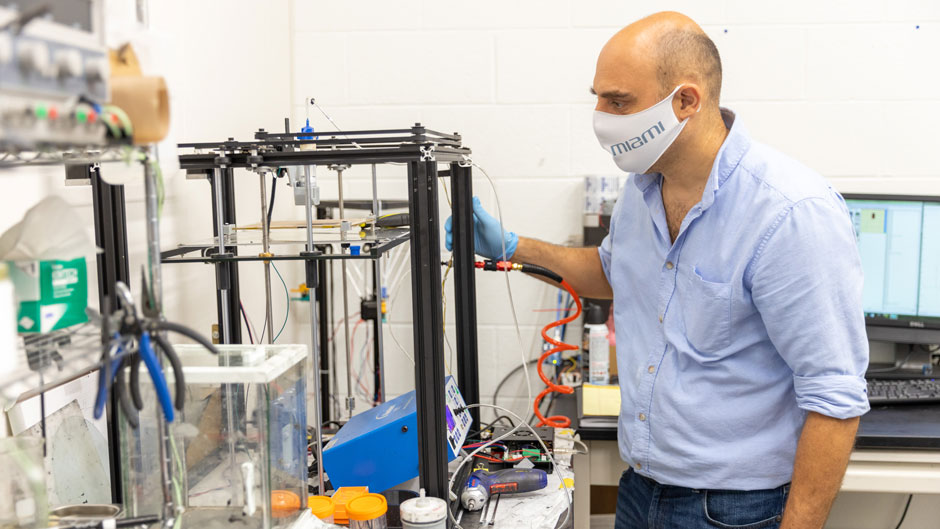Emrah Celik was getting closer and closer, but a glitch in a manufacturing technique kept preventing the University of Miami researcher from achieving the breakthrough in materials engineering that could make aircraft significantly lighter and more fuel efficient.
His theory was certainly sound: Add carbon fibers to a substance called thermoset composites to create a new type of material that’s lighter, yet stronger than aluminum and steel. But the roadblock he encountered was in the 3D printing process. During the fabrication phase, the fibers tended to clump together, clogging the printer’s nozzle.
So, Celik employed a little ingenuity to solve the problem, inventing a new 3D printing method—vibration-assisted additive manufacturing—that used mechanical vibration to prevent the fibers from clustering together during the critical extrusion phase.
“I also used shorter fibers with chemically modified surfaces to minimize the attraction between the fibers and maximize the adhesion to the thermoset matrix,” explained Celik, an assistant professor of mechanical and aerospace engineering in the College of Engineering. “Compared to traditional composite manufacturing, this allows us to fabricate thermoset composites in any shape and size, and with unprecedented mechanical performance.”

While the thermoset composite Celik produced is 80 percent lighter than steel and 50 percent lighter than aluminum, it packs a fiber reinforcement volume up to 46 percent, eight times higher than what he was able to achieve before he modified the fabrication process.
He compares the process of designing and manufacturing the new composite to preparing a gourmet soup, and credits his graduate assistant, Nashat Nawafleh, for playing an instrumental role in the procedure. “All the ingredients and spices must be just right,” Celik said. “Nashat worked endless hours in the lab optimizing the fiber type, fiber surface chemistry, and printing parameters to finally optimize the entire process to make the recipe just right.”
Funded by the United States Air Force, Celik’s research has the potential to revolutionize the aviation and space industries, allowing aerospace engineers to design craft that are lighter but strong enough to carry heavier loads.
The vibration-assisted additive manufacturing technique he developed to make the composite possible is just as groundbreaking. To his knowledge, he is the first to have employed the technology, for which he has applied for a provisional patent.
Developing novel technology is something Celik is used to. As a Ph.D. student at the University of Arizona, he designed and built a special atomic force microscope, using the instrument to take images of nanowires, which have a diameter equal to one-thousandth the width of a human hair. And later, as a postdoc student at the Miller School of Medicine, he designed and built another atomic force instrument to examine proteins and cells.
Celik arrived at the University of Miami College of Engineering six years ago, bringing with him his extensive knowledge of additive manufacturing techniques and the promise they hold for the manufacture of composites.
Engineering has been his passion since he was a little boy. “I’d create all sorts of things with LEGO blocks,” Celik said. “I guess that’s why my mother said I was a born engineer.”

